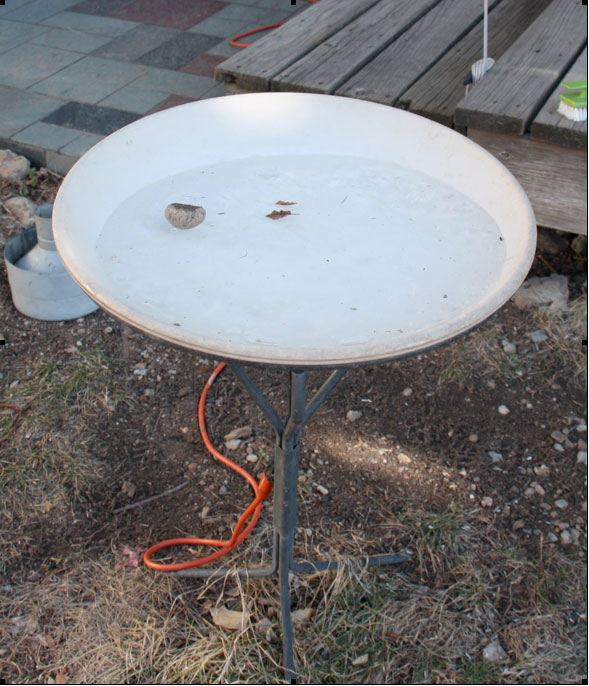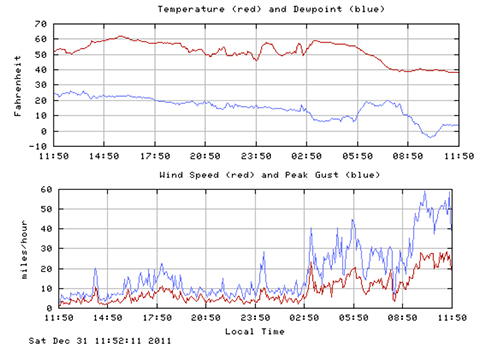Freezing at an air temperature above 32ºF (0ºC)?
Jan 3, 2012 - by Staff
Jan 3, 2012 - by Staff
Margaret LeMone | January 4, 2012 • We love birds. We have several feeders in the yard, and a few years ago we invested in a bird bath, which is powered so that the water never freezes. This way the birds (and squirrels!) can get a drink in the middle of winter.
We also like to save energy. So when our power bill went up inexplicably last month, we decided the bird bath might be at least partially responsible. So we started emptying the bird bath at sunset and turning the power off, then turning the power back on when we refill it in the morning.
At 8:00 a.m. on the morning of December 31, when I filled up the bird bath, the temperature was 44ºF (7ºC). The forecast was for wind and temperatures in the 40s (4.4-10ºC), so I thought it was safe to leave the heat off. The temperature had fallen to 40ºF (4.4ºC) at our house by about 10:00 a.m., when we went out to do some errands, but I remained unconcerned. With the strong winds, I thought the temperature would remain fairly steady through the day.
But at noon when we got home, I was surprised to see that the water in the bird bath was frozen. The ice was thin in spots, just enough for a starling to poke through and take a drink, but it was clearly frozen. A look at the temperatures at NCAR's Foothills Lab (see graphic below) showed that they had remained steady, as I had expected.
The picture at left shows the bird bath, with a rock on the ice to convince the skeptic. The other debris on the surface consists of pieces of leaves and twigs, blown onto the bird bath by the winds.
Why did this happen? If one takes the temperature and dew point data from the figure below, the wet bulb temperatures are consistently at or below freezing. (The wet bulb temperature is the lowest temperature a wet surface can reach due to cooling by evaporation.) The strong winds, as illustrated by the record at Foothills Lab, and the low dew points (and hence relative humidity), enabled the air not only to evaporate the water at the surface rapidly, cooling the temperature to freezing, but also to mix the cold water through the depth of the bird bath.
The result? The water froze, even though the air temperature was well above freezing. I guess I’ll have to watch the wind and dew point as well as the temperature!

Temperature, dew point, and wind speed at NCAR’s Foothills Laboratory, two miles east of our house. The plot begins at 11:52 a.m. MST on December 30, 2011, and extends to 11:52 a.m. on December 31.